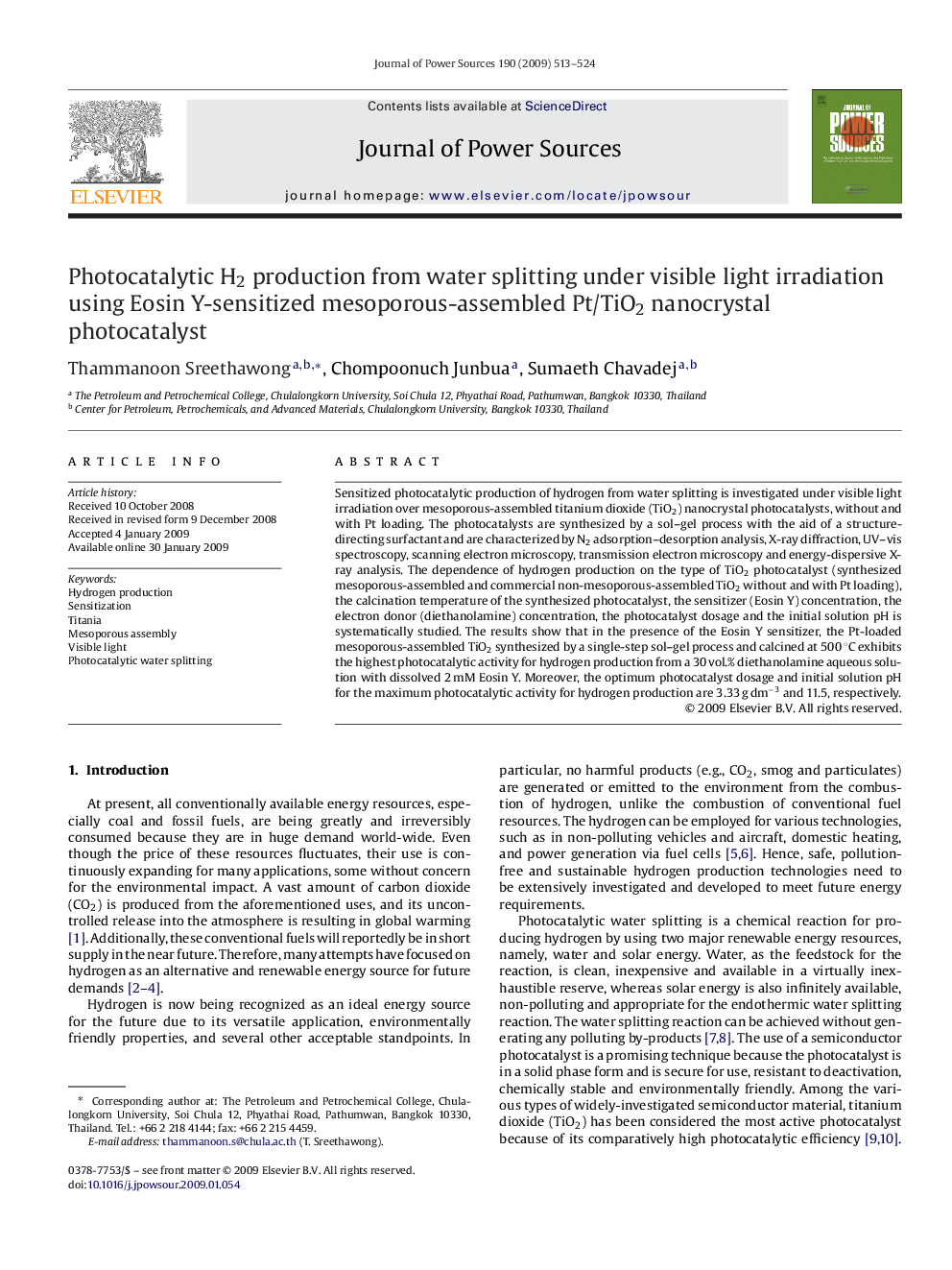| Article ID | Journal | Published Year | Pages | File Type |
|---|---|---|---|---|
| 1290856 | Journal of Power Sources | 2009 | 12 Pages |
Abstract
Sensitized photocatalytic production of hydrogen from water splitting is investigated under visible light irradiation over mesoporous-assembled titanium dioxide (TiO2) nanocrystal photocatalysts, without and with Pt loading. The photocatalysts are synthesized by a sol-gel process with the aid of a structure-directing surfactant and are characterized by N2 adsorption-desorption analysis, X-ray diffraction, UV-vis spectroscopy, scanning electron microscopy, transmission electron microscopy and energy-dispersive X-ray analysis. The dependence of hydrogen production on the type of TiO2 photocatalyst (synthesized mesoporous-assembled and commercial non-mesoporous-assembled TiO2 without and with Pt loading), the calcination temperature of the synthesized photocatalyst, the sensitizer (Eosin Y) concentration, the electron donor (diethanolamine) concentration, the photocatalyst dosage and the initial solution pH is systematically studied. The results show that in the presence of the Eosin Y sensitizer, the Pt-loaded mesoporous-assembled TiO2 synthesized by a single-step sol-gel process and calcined at 500 °C exhibits the highest photocatalytic activity for hydrogen production from a 30 vol.% diethanolamine aqueous solution with dissolved 2 mM Eosin Y. Moreover, the optimum photocatalyst dosage and initial solution pH for the maximum photocatalytic activity for hydrogen production are 3.33 g dmâ3 and 11.5, respectively.
Keywords
Related Topics
Physical Sciences and Engineering
Chemistry
Electrochemistry
Authors
Thammanoon Sreethawong, Chompoonuch Junbua, Sumaeth Chavadej,
